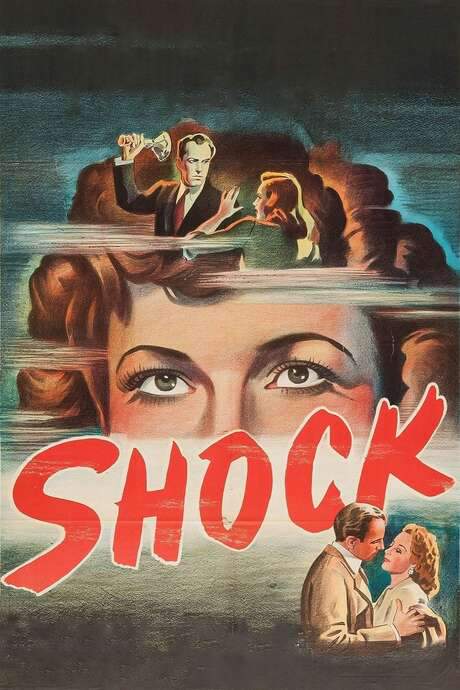
High Wall
Year: 1947
Runtime: 99 mins
Language: English
Director: Curtis Bernhardt
Steven Kenet, who suffers from recurring brain injury, appears to have strangled his wife and confesses the crime. He is placed in an understaffed county asylum teeming with difficult inmates, where the claustrophobic environment heightens the tension. Dr. Ann Lorrison, skeptical of his story and his refusal of treatment, begins to doubt his guilt.
Warning: spoilers below!
Haven’t seen High Wall yet? This summary contains major spoilers. Bookmark the page, watch the movie, and come back for the full breakdown. If you're ready, scroll on and relive the story!
High Wall (1947) – Full Plot Summary & Ending Explained
Read the complete plot breakdown of High Wall (1947), including all key story events, major twists, and the ending explained in detail. Discover what really happened—and what it all means.
Former WWII bomber pilot and recent ex-mercenary flyer Steven Kenet [Robert Taylor] crashes his car into a river, attempting to cover up his wife’s murder as a suicide. He survives but is sent to the county psychiatric hospital for evaluation to determine if he is sane enough to stand trial. He has no memory of what happened, the result of a pre-existing wartime brain injury aggravated by a crash in Burma.
At the hospital, Dr. Ann Lorrison [Audrey Totter] takes a genuine interest in his case, and in him. She explains that surgery could relieve Kenet’s brain injury, but he refuses to consent, stalling for time until he can clear himself and be able to take care of his six-year-old son. The medical team resists pressuring him, hoping to protect his rights while exploring every possibility.
Kenet’s fragile situation shifts when Lorrison informs him that his mother has died, ostensibly dooming his son to an orphanage. The news jolts him into reconsidering his stance, nudging him toward any path that might secure his freedom and family life. The tension between medical ethics, legal jeopardy, and a man’s need to protect his child becomes a quiet undercurrent throughout the story.
Henry Cronner [Vince Barnett], the janitor of the apartment building where Kenet’s wife’s boss Willard Whitcombe resides, tries to blackmail him over a possible role in the death. After being rebuffed, Cronner goes to see Kenet, hinting at a way to help—but details are withheld until Kenet can pay. Before Kenet can respond, Whitcombe himself moves to silence the threat, sending Cronner plummeting to his death down the building’s elevator shaft.
To unlock the truth, Kenet undergoes narcosynthesis—a light dose of sodium pentothal—to help him remember what happened. He recalls blacking out just as his hands tighten around his wife’s neck and later regaining consciousness to find her dead body. He hides in Lorrison’s car to escape the hospital, then breaks into Whitcombe’s apartment and recreates a scene resembling the truth under careful scrutiny. He returns to the hospital, unnoticed, waiting for Whitcombe to contact him.
Whitcombe shows up, but not empty-handed. He slyly provokes Kenet into a murderous rage by confessing his own two killings: Cronner’s death and Helen Kenet’s murder. In desperation, Kenet steals Lorrison’s car and breaks out of the hospital, evading a citywide manhunt for a homicidal maniac. With Lorrison at his side, who refuses to abandon him, he reaches Whitcombe’s apartment and engages in a brutal fistfight that leaves Whitcombe dazed. Seizing the moment, Lorrison administers sodium pentothal to Kenet, and Whitcombe recounts his motives in a complete confession.
The confession is read aloud before a waiting crowd of police and the D.A., David Wallace, who tells Kenet he is free to go. Even if everything Whitcombe said under truth serum would be inadmissible in court, Kenet remains confident of building his defense the old-fashioned way. After the dramatic confrontation, Kenet and Lorrison return to her home, where she has had custody of his son all along. The couple finally move toward a future together, secure in their reunion and the possibility of a life beyond the trauma that began in the river and the courthouse.
Last Updated: October 09, 2025 at 11:03
Unlock the Full Story of High Wall
Don't stop at just watching — explore High Wall in full detail. From the complete plot summary and scene-by-scene timeline to character breakdowns, thematic analysis, and a deep dive into the ending — every page helps you truly understand what High Wall is all about. Plus, discover what's next after the movie.
High Wall Timeline
Track the full timeline of High Wall with every major event arranged chronologically. Perfect for decoding non-linear storytelling, flashbacks, or parallel narratives with a clear scene-by-scene breakdown.

Similar Movies to High Wall
Discover movies like High Wall that share similar genres, themes, and storytelling elements. Whether you’re drawn to the atmosphere, character arcs, or plot structure, these curated recommendations will help you explore more films you’ll love.
Explore More About Movie High Wall
High Wall (1947) Scene-by-Scene Movie Timeline
High Wall (1947) Movie Characters, Themes & Settings
High Wall (1947) Spoiler-Free Summary & Key Flow
Movies Like High Wall – Similar Titles You’ll Enjoy
High Crimes (2002) Full Summary & Key Details
Anatomy of a Fall (2023) Detailed Story Recap
In the Wall (2007) Film Overview & Timeline
Wall of Secrets (2003) Ending Explained & Film Insights
Blind Horizon (2003) Spoiler-Packed Plot Recap
The Wall Man (2007) Detailed Story Recap
The Upturned Glass (1947) Film Overview & Timeline
High Tide (1947) Full Summary & Key Details
The House on Telegraph Hill (1951) Story Summary & Characters
13 West Street (1962) Film Overview & Timeline
Outside the Wall (1950) Story Summary & Characters
The Dark Past (1948) Full Summary & Key Details
Behind the High Wall (1956) Complete Plot Breakdown
Back to the Wall (1958) Detailed Story Recap
Shock (1946) Detailed Story Recap

















